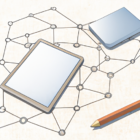In today’s data-driven world, the volume of information generated is staggering. Traditional cloud computing has been the backbone of data processing but is now meeting challenges such as high latency, bandwidth limitations, and security concerns. Enter Edge Computing – a technology poised to redefine how and where we process data.
What is Edge Computing?
Edge computing is the practice of processing data closer to the source where it is generated, rather than relying on a centralized data center. This could mean handling data on local devices, gateways, or servers located near the data source. As the Internet of Things (IoT) continues to expand, the need for fast, responsive data processing is more critical than ever.
Benefits of Edge Computing
- Reduced Latency: By processing data at the edge of the network, companies can achieve lower latency, allowing real-time data processing and quick responses.
- Bandwidth Optimization: Edge computing reduces the amount of data sent to the cloud, thereby optimizing bandwidth usage and lowering costs.
This is particularly beneficial for IoT devices that continuously generate data. - Improved Security: Processing data locally helps to maintain sensitive information closer to its source, minimizing the risk of data breaches that can occur during transmission.
- Scalability: Edge computing enables scalable and flexible data processing solutions, allowing enterprises to adapt quickly to increasing data loads and device interactions.
How Edge Computing Works
Edge devices, such as routers, gateways, or IoT sensors, gather and analyze data in real-time, making decisions without the need to communicate with a centralized cloud server continuously. This localized data handling ensures faster processing times and immediate action based on insights derived from the data.
Applications of Edge Computing
Edge computing is instrumental in various sectors, including:
- Healthcare: Real-time patient monitoring with medical devices that can process data locally to provide immediate alerts.
- Smart Cities: Infrastructure that collects data on traffic patterns, weather, and utilities to optimize city services.
- Manufacturing: IoT-enabled devices that monitor equipment and processes to preemptively address maintenance needs and reduce downtime.
- Autonomous Vehicles: Self-driving cars that require instantaneous data processing for navigation and safety decisions.
Challenges Ahead
Despite its advantages, edge computing faces challenges such as device management, data consistency, and the complexities of integrating with existing cloud infrastructure. However, as technology advances, these hurdles are becoming increasingly surmountable.
Conclusion
Edge computing is revolutionizing the way we think about data processing and delivery. With its ability to minimize latency, optimize bandwidth, enhance security, and support real-time analytics, it is set to be a crucial element in the continuing evolution of cloud computing and IoT. Embracing edge computing can prepare businesses for a future where data is king, and speed is essential.
For more insights on cutting-edge technologies, make sure to follow our blog.






